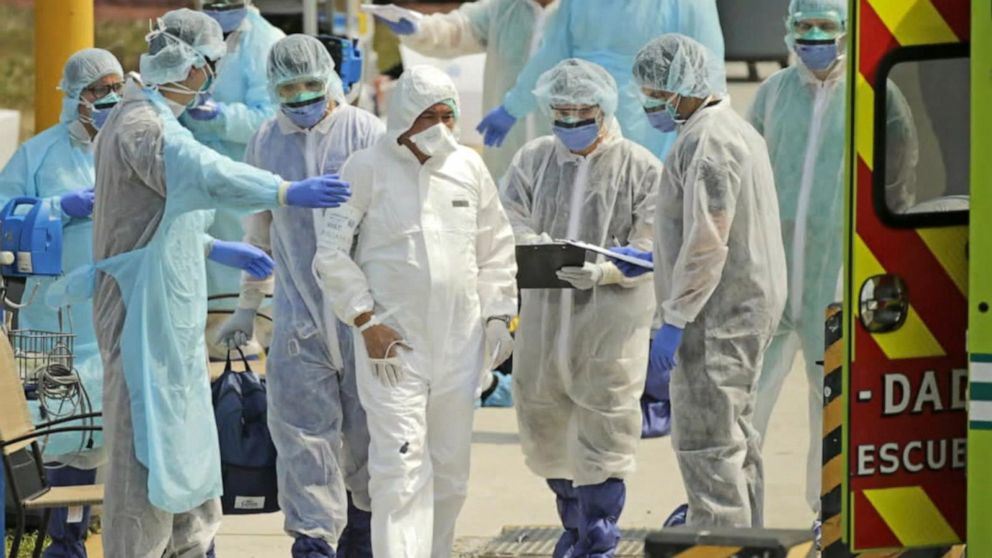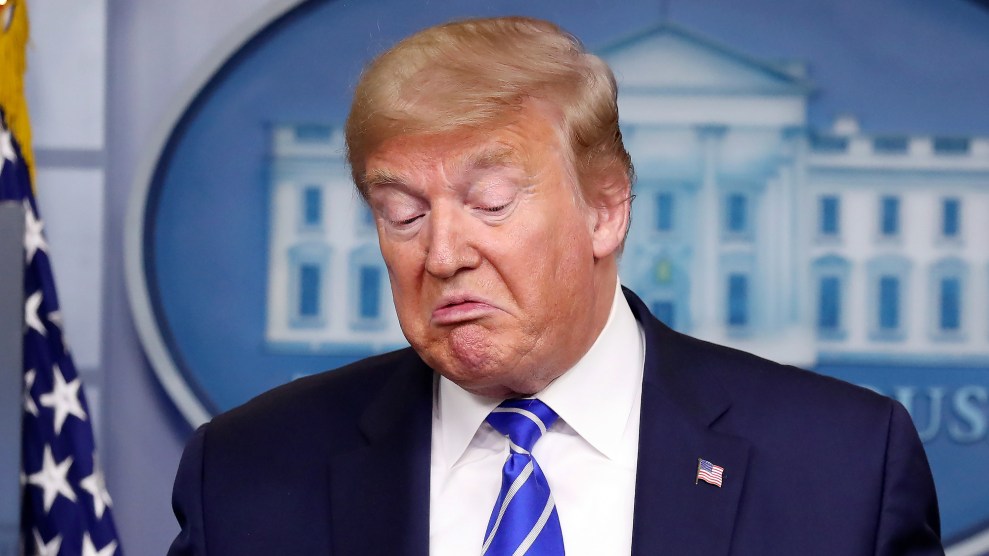What is the Federal Government Doing to Fight Corona Virus
In March, President Trump declared a national emergency over the corona virus pandemic, effectively freeing up to $50 billion in federal funds to help states and territories fight the spread of the virus, which he said would include expanding access to testing.
 Still, there have been many issues with the availability of the corona virus test. Though testing capacity has improved, there are still widespread shortages. In many areas, state health officials and medical providers say they are unable to test as many people as they would like to, and tests remain available only to those who meet specific criteria. Public-health officials say that far more testing — for both the virus and antibodies — will be needed in order to safely reopen the economy.
Speaking April 27, President Trump announced a plan to increase federal support to states to provide increased testing, saying that the U.S. would “double” the number of tests it had been conducting. Currently, the U.S. is conducting about 300,000 tests a day. While an improvement, experts say this still falls far short of the number of tests needed, which is more like 5 million tests a day by June and 20 million tests a day by late July.
Still, there have been many issues with the availability of the corona virus test. Though testing capacity has improved, there are still widespread shortages. In many areas, state health officials and medical providers say they are unable to test as many people as they would like to, and tests remain available only to those who meet specific criteria. Public-health officials say that far more testing — for both the virus and antibodies — will be needed in order to safely reopen the economy.
Speaking April 27, President Trump announced a plan to increase federal support to states to provide increased testing, saying that the U.S. would “double” the number of tests it had been conducting. Currently, the U.S. is conducting about 300,000 tests a day. While an improvement, experts say this still falls far short of the number of tests needed, which is more like 5 million tests a day by June and 20 million tests a day by late July.
 On March 19, Secretary of State Mike Pompeo announced that the U.S. would close its borders with Canada and Mexico, barring entry to all nonessential travelers. President Trump has also barred entry of all foreign nationals who have been in high-risk countries, including China, Iran, and much of Europe, within the last 14 days. The CDC has advised against all nonessential travel throughout most of Europe, South Korea, China, and Iran and has advised older and at-risk Americans to avoid travel to any country.
On March 27, President Trump signed a $2 trillion stimulus plan, the largest in modern American history, which will send direct payments of around $1,200 to millions of Americans who earn less than $99,000, along with an additional $500 per child. The first round of deposits went out on April 11. The plan also substantially expands unemployment benefits, including extending eligibility to freelance and gig workers, and provides aid to businesses and companies in distress. Treasury Secretary Steven Mnuchin has extended the tax-filing deadline to July 15, and President Trump signed another $484 billion relief package in late April, which will provide aid to small businesses and funding for hospitals and testing. On May 15, the House approved a new $3 trillion relief package, which would include nearly $1 trillion in aid to state and local governments, as well as another round of $1,200 payments to Americans.
Researchers have made a number of early steps toward a vaccine that look promising. A corona virus vaccine that has been tested in eight people appears to be safe and effective, according to the manufacturer, Moderna, which plans to begin additional tests soon. On May 5, Pfizer and the German pharmaceutical company BioNTech announced that they were beginning human trials for a possible coronavirus vaccine in the U.S., and the U.S. government has pledged to provide up to $1.2 billion for vaccine research to the drug company AstrZeneca.However, U.S. government officials have said that producing a widely available vaccine could take a year to 18 months.
On Monday night, President Trump Threatened to permanently cut off U.S. funding to the World Health Organization, which he has accused of failing to act quickly and aggressively to stop the early spread of the virus — a criticism that has been leveled at his own administration. Trump halted funding to the WHO last month in an apparent attempt to shift the blame for the fallout from the pandemic, a decision that was met with widespread criticism from global leaders.
On March 19, Secretary of State Mike Pompeo announced that the U.S. would close its borders with Canada and Mexico, barring entry to all nonessential travelers. President Trump has also barred entry of all foreign nationals who have been in high-risk countries, including China, Iran, and much of Europe, within the last 14 days. The CDC has advised against all nonessential travel throughout most of Europe, South Korea, China, and Iran and has advised older and at-risk Americans to avoid travel to any country.
On March 27, President Trump signed a $2 trillion stimulus plan, the largest in modern American history, which will send direct payments of around $1,200 to millions of Americans who earn less than $99,000, along with an additional $500 per child. The first round of deposits went out on April 11. The plan also substantially expands unemployment benefits, including extending eligibility to freelance and gig workers, and provides aid to businesses and companies in distress. Treasury Secretary Steven Mnuchin has extended the tax-filing deadline to July 15, and President Trump signed another $484 billion relief package in late April, which will provide aid to small businesses and funding for hospitals and testing. On May 15, the House approved a new $3 trillion relief package, which would include nearly $1 trillion in aid to state and local governments, as well as another round of $1,200 payments to Americans.
Researchers have made a number of early steps toward a vaccine that look promising. A corona virus vaccine that has been tested in eight people appears to be safe and effective, according to the manufacturer, Moderna, which plans to begin additional tests soon. On May 5, Pfizer and the German pharmaceutical company BioNTech announced that they were beginning human trials for a possible coronavirus vaccine in the U.S., and the U.S. government has pledged to provide up to $1.2 billion for vaccine research to the drug company AstrZeneca.However, U.S. government officials have said that producing a widely available vaccine could take a year to 18 months.
On Monday night, President Trump Threatened to permanently cut off U.S. funding to the World Health Organization, which he has accused of failing to act quickly and aggressively to stop the early spread of the virus — a criticism that has been leveled at his own administration. Trump halted funding to the WHO last month in an apparent attempt to shift the blame for the fallout from the pandemic, a decision that was met with widespread criticism from global leaders.










